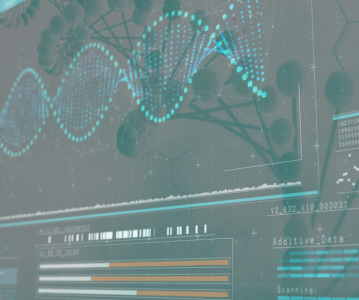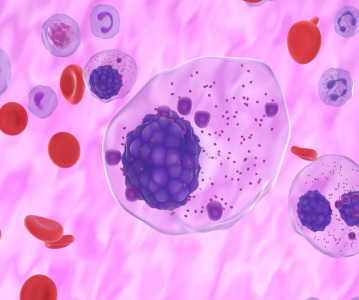Study Finds that Microinjection Platform Enables Assessment of Multiple Cancer Drugs Directly in Tumours

A newly developed technology for simultaneously comparing response to multiple cancer drugs or combinations while a tumour is still in a patient’s body has been shown to accurately predict systemic response to the drugs, according to researchers at Fred Hutchinson Cancer Research Center and Presage Biosciences. The patented technology, called CIVO, consists of an arrayed microinjection drug delivery device and quantitative analysis methodology.
The findings by Jim Olson, and colleagues at Fred Hutch and Richard Klinghoffer, and colleagues at Presage Biosciences with collaborators at Celgene are published online 22 April ahead of the May 2015 issue of Science Translational Medicine, a publication of the American Association for the Advancement of Science.
“Currently, only 7% of new oncology drug candidates that demonstrated anti-cancer activity in preclinical studies subsequently demonstrate sufficient efficacy in clinical trials to warrant FDA approvals,” said Olson, Member of the Clinical Research Division at Fred Hutch, a pediatric oncologist at Seattle Children’s Hospital and Founder of Presage. “As a practicing pediatric oncologist, I deal every day with the limitations of current cancer therapies, and I’ve made it my life’s work to help find solutions to this challenge. We developed CIVO because patients desperately need better approaches to identify treatments that will provide benefit and improve patient survival.”
CIVO Technology
CIVO enables the placement of multiple columns of drugs for analysis directly into the tumour along the needle axis, spanning the full depth of the tumour. This makes it possible to assess drug effects with multiple biomarkers and in multiple regions along the injection axis to capture the heterogeneity of response within the tumor. Later, (typically 24–72 hours after injection), the tumour is resected for subsequent analysis, and responses are measured with multiple immunohistochemistry-based assays and high-resolution scanning.
The CIVO technology intentionally bypasses bioavailability, biodistribution, metabolism, and excretion issues associated with systemic dosing, making it possible to focus on whether a drug engages its target, how cancer cells respond to target engagement, and whether the ultimate fate of the exposed cells indicates potential for patient therapeutic response — all in the context of an actual tumour microenvironment.
Presage holds six US patents on its proprietary CIVO technology, including method claims covering the evaluation of drug response directly in a tumour.
“We have employed CIVO to investigate drug response earlier in the development process as it enables evaluation of multiple drugs and combinations efficiently and directly in the native tumor microenvironment,” said Rajesh Chopra, Corporate Vice President of Translational Research at Celgene. “Presage’s approach is entirely novel and has demonstrated the ability to characterize tumor heterogeneity and drug resistance and has shown the potential to address these challenges through novel drug combinations.”
Related News
-
News BioNTech to begin mRNA vaccine manufacturing in Rwanda by 2025
German biotechnology company BioNTech has stated their intentions to begin production at their mRNA vaccine factory in Rwanda by 2025, which will mark the first foreign mRNA vaccine manufacturing site on the continent of Africa. -
News Identifying Alzheimer’s Disease biomarker proteins with whole blood tests
A University of Manchester spin-out pharmaceutical company, PharmaKure, has reported successful study results for the quantification of Alzheimer’s Disease biomarker proteins with a whole blood test. -
News Bill & Melinda Gates Foundation to boost mRNA vaccine initiatives in Africa with USD $40m
To address vaccine inequality and accessibility issues, the Bill & Melinda Gates Foundation aims to deliver USD $40m to various biotech companies and vaccine manufacturers in support of mRNA vaccine development. -
News CPHI Podcast Series: Exploring neurological frontiers in Alzheimer's and beyond
The next episode of the CPHI Podcast Series delves into the science and background behind some recent developments in the field of Alzheimer's disease and neurological disorders. -
News Is patient centricity the future of pharmaceutical manufacturing?
In this interview with Sandra Sánchez y Oldenhage, President of PharmAdvice, she speaks to the importance of considering patients in the manufacturing stages of the pharmaceutical supply chain, and how it can redefine healthcare. -
News CPHI Podcast Series: How to leverage AI for Drug Discovery
Artificial intelligence is the topic of debate in the latest episode from the CPHI Podcast Series, where Digital Editor Lucy Chard speaks with Bill Whitford of DPS Group about the integration of AI in healthcare. -
News Pfizer forges ahead with blood cancer therapy after approval from FDA
Pfizer gains accelerated approval from the US FDA for their new bispecific antibody therapy for multiple myeloma, set to address an unmet need for patients. -
News Alzheimer's drug donanemab deemed effective in landmark clinical trial
Results from the TRAILBLAZER-ALZ 2 Randomised Clinical Trial into the use of donanemab to treat early symptoms of Alzheimer’s disease have been analysed.
Position your company at the heart of the global Pharma industry with a CPHI Online membership
-
Your products and solutions visible to thousands of visitors within the largest Pharma marketplace
-
Generate high-quality, engaged leads for your business, all year round
-
Promote your business as the industry’s thought-leader by hosting your reports, brochures and videos within your profile
-
Your company’s profile boosted at all participating CPHI events
-
An easy-to-use platform with a detailed dashboard showing your leads and performance







